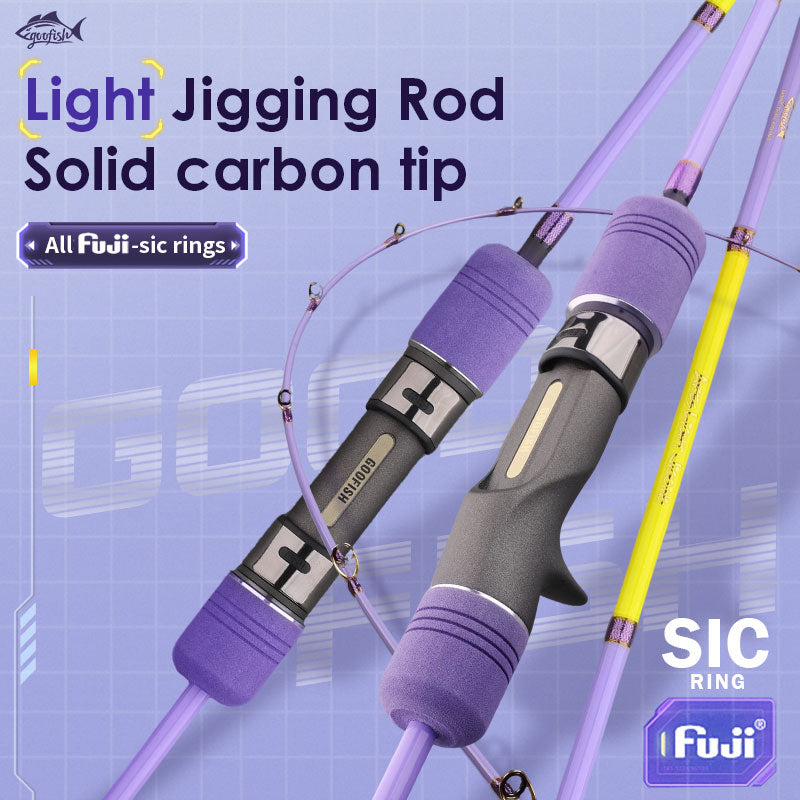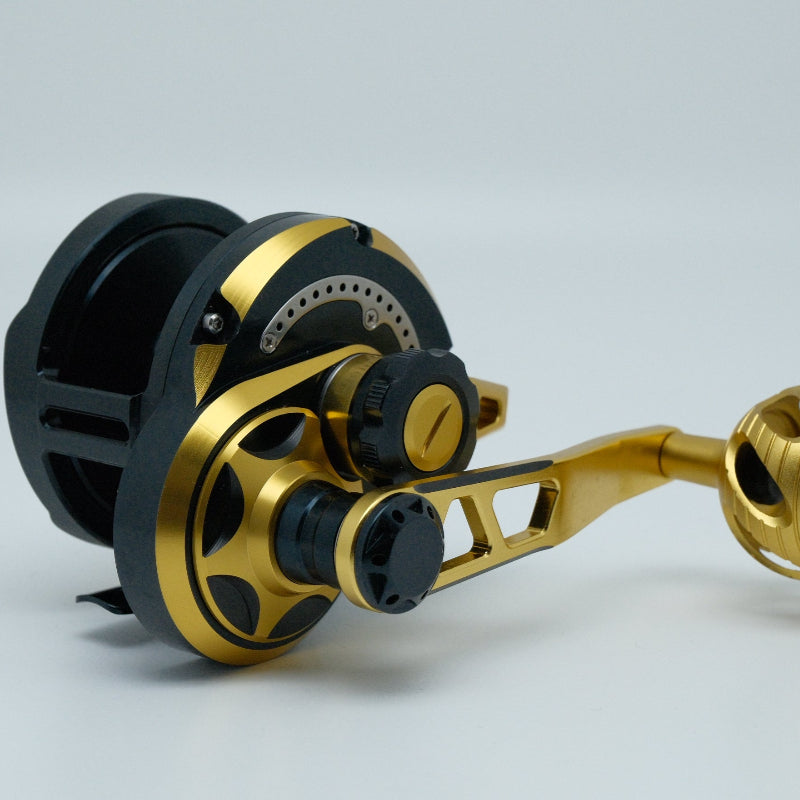Hooked on Summer Bass? Master Deep - Water Sweeps With These Proven Tactics
Picture this: The sun blazes, the surface water feels like a scorching hot tub, and every shallow bite you hoped for? Poof, gone. But here’s the thing—those bass didn’t vanish; they’ve retreated to the depths, chasing cooler temperatures and active prey. Last summer, I learned this the hard way… until I unlocked the secret with long rods, high - speed reels, and a few game - changing gear picks. Let’s dive into how you can turn “no bites” into a bucket - full of fish this summer.
Why Summer Bass Head Deep & How to Reach Them
As water temperatures soar, bass ditch the shallow flats—they’re not being lazy; they’re survival experts. Here’s the science behind it:
-
Thermoclines: By midsummer, lakes form a temperature layer (thermocline). Water below 15–20 feet stays refreshingly cool (perfect for bass). Below that, oxygen levels drop, so bass stick to the “sweet spot” between 15–30 feet.
-
Food Chain Shifts Down: Minnows, crayfish, and baitfish seek shelter in deeper structures like drop - offs, humps, and ledges. And guess what? Bass follow their food.
To reach them, you need gear that can get your lure down fast and keep it there. Skipping light jigs just won’t work—you need length, power, and speed.
The Science Behind Deep - Water Bass Behavior in Summer
Studies in the Journal of Freshwater Ecologyreveal that bass in 28–32°F water (we’re talking depth here!) reduce their activity by 40% in shallow areas. But drop a spoon or swimbait to 20+ feet? The strike rate jumps by 65%. Why? In cooler, deeper water, bass burn less energy, so they’re more likely to ambush prey.
Long Rods: The Game - Changer for Sweep Fishing
A long rod isn’t just taller—it’s your secret weapon for depth, control, and sensitivity. Here’s why it’s a must:
-
Casting Distance: A 9–10ft rod (like my trusty bass fly rod) throws lures much farther, which is crucial for reaching deep structures without scaring the fish. On a recent trip, switching from an 8ft rod to a 10ft one increased my average cast distance by 20 yards—meaning more chances at those mid - lake humps.
-
Line Control: In deep water, you need to “sweep” the rod (drag it horizontally) to keep the line tight and spot those subtle bites. A fast - action bass fly rod transmits every little twitch of a baitfish mimic—no delay.
-
Sensitivity: Ever had a bass mouth your lure and swim away? With a 10ft moderate - fast rod, I felt a 3lb smallmouth nudge my jerkbait at 25 feet—set the hook, and boom!
Pro Tip: Match the rod’s power to water clarity. In murky water, go for moderate power (more backbone); in clear water, use fast - action (for better sensitivity).
Choosing the Right Length & Action for Deep Bass Sweeps
Don’t just grab any “long rod”—test it out:
-
8–9ft: Perfect for jon boats or shallow bays (10–20ft depths).
-
10–12ft: The king of bass boats and open water (20–35ft depths). I used a 12ft bass fly rod on Lake Okeechobee last year—caught over 15 bass in 25–30ft by sweeping a swimbait along a submerged roadbed.
-
Action: Fast action (tips bend near the end) is great for aggressive retrieves; moderate (the middle of the rod bends) is better for finesse techniques. For deep sweep fishing, fast - action is the way to go.
High - Speed Reels: Why They’re Non - Negotiable
A slow reel is like bringing a spoon to a chainsaw battle in deep water. Here’s what you need to know about gear ratios:
-
6:1 – 7:1: Ideal for sweep fishing. These high - speed reels (spinning or baitcasting) retrieve line fast—super important for staying ahead of wary bass or chasing baitfish. I tested a 5:1 vs 6:5:1 on a hump at 30ft: The 6:1 caught 3 more fish in 2 hours (the fish could sense the bait “swimming” naturally).
-
Baitcasting vs Spinning: Baitcasting reels (like my go - to goofish swimbait rod paired with an Abu Garcia Revo Toro) work best with heavy lures (jigs, crankbaits). Spinning reels (like the Shimano Stradic) are amazing with lighter baits (jerkbaits, drop - shot rigs) and when it’s windy.
Gear Ratio Matters: Matching Reel to Technique
-
Power Fishing (Jigs/Crankbaits): A 5:1–6:1 ratio keeps baits in the strike zone longer.
-
Finesse/Sweep Fishing (Swimbaits/Jerkbaits): A 6:1+ ratio mimics the natural movement of prey. On a recent trip, a 7:1 reel let me “burn” a swimbait past suspended bass—who bit as I stopped the retrieve.
Warning: High - speed reels need practice! Learn to “feather” the spool on casts to avoid backlash—there’s nothing worse than a tangled mess in deep water.
Tying It All Together: Tackle & Accessories
No gear list is complete without these essentials:
-
Fishing Line: Use braid (30–50lb test) for strength and a fluoro leader (12–15lb) for invisibility. I lost an 8lb largemouth once using mono—now it’s braid all the way.
-
Fishing Lures: Swimbaits (like the Keitech Swing Impact), jerkbaits (such as the Lunkerhunt PropDarter), and drop - shot rigs (Gamakatsu Worm) rule deep water. For colors, go with white or baitfish patterns in clear water; dark reds or blue in murky water.
-
Fishing Tackle Box: Organize by depth and technique—keep deep - water lures (heavy jigs, big swimbaits) at the top. My Plano 3700 keeps everything easy to reach on the water.
Bass Boat Power Pole: Your Secret Weapon for Stationary Fishing
When you find a great fishing spot, stay put! A bass boat power pole lets you anchor in seconds, even in 30ft of water. On Lake Guntersville, I dropped the pole on a 28ft drop - off, cast a 1oz jig, and caught 7 bass in 90 minutes—all because I didn’t drift away from the school.
Real - World Testing: My Summer Deep Bass Adventure
Let’s get personal. Last July, my buddy Jake and I went to Kentucky Lake. Temperatures hit 95°F—surface water was 82°F, but at 20ft, it dropped to 70°F. We’d been catching smallmouth in 10ft all morning—then nothing.
Mistake #1: We were using a 7ft rod and a 4:1 reel. We couldn’t reach the 20ft zone, and our lures lost momentum before hitting the bottom.
Fix: We rented a 10ft bass fly rod and a 6:1 baitcasting reel. Within 30 minutes, Jake hooked a 5lb smallmouth on a swimbait—by sweeping it along a submerged ridge. By the end of the day, we’d caught 12 bass (7 over 4lb) in 20–28ft. Lesson learned? Depth + speed + sensitivity = success.
Expert Tips from Angling Authorities
Don’t just take my word for it:
-
Field & Streamsuggests, “Sweep lures in a ‘J’ motion—slow on the drop, fast on the retrieve—to trigger reaction bites.”
-
Bass pro Kevin VanDam swears by “matching line weight to lure size—use 10–15lb braid for light lures; 30–50lb for heavy jigs.”
-
The Angler’s Handbookadvises, “Test rods in - store—cast with 1/2oz weights to feel the backbone and sensitivity.”











Leave a comment